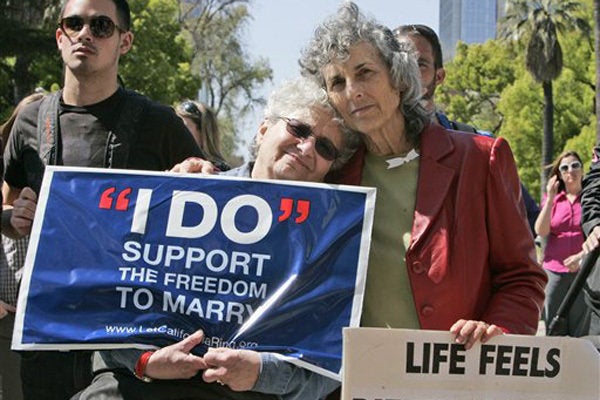
Recently I have held some interesting conversations stemming from the debate about California's Prop 8. Specifically, if the law defines the state of matrimony to be legal only between a man and a woman, how does the law define a man and a woman? It has been ever present on my mind, as I have ventured into the interesting phase known as menopause, broadening my professional understanding of this passage as I pass through it myself. It is often said that a pediatrician cannot really understand the perspective of the parent until they themselves experience parenthood. I would add that as an obstetrician, my own pregnancy experience was an amazing "teacher," and that I was a better doctor because of it. Menopause is even more of a frontier as traditional medicine teaches the facts, without the anthropologic insight needed to shepherd a woman through the purpose of it all. The bottom line is that much of femininity is a state that is hormonally created, and when those hormones are withdrawn it is not shameful to ponder how that affects our "womanliness."
If I asked my husband if menopause made me less feminine he would see the question as rhetorical and pretend not to have any idea what I am talking about; a very safe strategy. My girlfriends discuss the implications with only obtuse musings about the change in our aesthetic, one remarking (unforgettably) to me, "Certain clothes I used to love now seem to look absurd, even though they still fit." It's as if the beguiling signs of fertility are withdrawn, making the mirror like that of Snowhite's nemesis. The changes are so subtle as to be ethereal; it seems the thin veil laden with pheromones is gradually snuffed out. There are many strategies to negotiate this passage, some involve embracing it. Still, it seems Mother Nature would have those of us whose gonads are retiring pass the proverbial reproductive baton to the next generation, saying goodbye to some of Her enhancements as we do so.
So, back to the original question, how does the law define a man and a woman? Apparently the definition varies from state to state in this country. None of them involve proving the presence of a gonad, specific genitals, or requiring a blood test for chromosomes. These strategies would leave many in the gray zone such as those that have had surgery for diseases of the testicles or ovaries, those that have chromosomal variances (i.e. there are approximately 60,000 individuals in the US with only the X sex chromosome, known as Turner's Syndrome), those that have had surgery to change their sex organs, or those that are chromosomally female (46XX), but because of a relatively common enzyme deficiency, may appear to be males at birth (Congenital Adrenal Hyperplasia), or those that appear female at birth but are actually chromosomally XY due to a rare enzyme deficiency that does not allow the production of the active form of testosterone...and there are others and combinations of the above. Some have proposed that the definition rely on what is on an individual's birth certificate, but assuming the sex assignment is "correct" in the first place, this documentation can be changed in most states (for example in Kansas if there is a "mistake" one can simply have the change notarized and submit for a corrected certificate) imparting a somewhat arbitrary nature to this document. Perhaps since the reason for mandating a male/female mix for marriage must be procreation, the definition should be: "Two individuals who could together procreate if they so choose." But that would not be fair to the woman whose tubes are tied, or the man with a vasectomy who want to get legally hitched...or for that matter menopausal women, or men with ED (erectile dysfunction). This is not to mention the more than 2 million couples that are infertile in this country that would not be eligible for a marriage defined by the "potential to procreate."
While the federal Defense of Marriage Act (DOMA) signed by President Clinton in 1996 was intended to protect states form being forced to accept the legitimacy of same sex marriage, it went on to define marriage as between, "One man and one woman." The definition of one man and one woman was not included. Perhaps it is like the definition of obscenity in the famous words of Justice Potter Stewart, "I know it when I see it...," but who will be the ultimate judge of our sexual assignment? Somehow the image of the Harry Potter "Sorting Hat" seems apropos.
I have spent my adult life devoted to the care of women; I have studied (and written) about every one of the features that make us unique, and I can honestly say that not only could I not define a woman, it would be diminutive to try and do so. Accordingly, with all of this debate, what if we simply accept the very human desire to partner for life and support that phenomenon between two people--period. Then I can go back to my musings about will he love me after my gonads have retired knowing that regardless, we're legally married, and he is quote: "stuck."